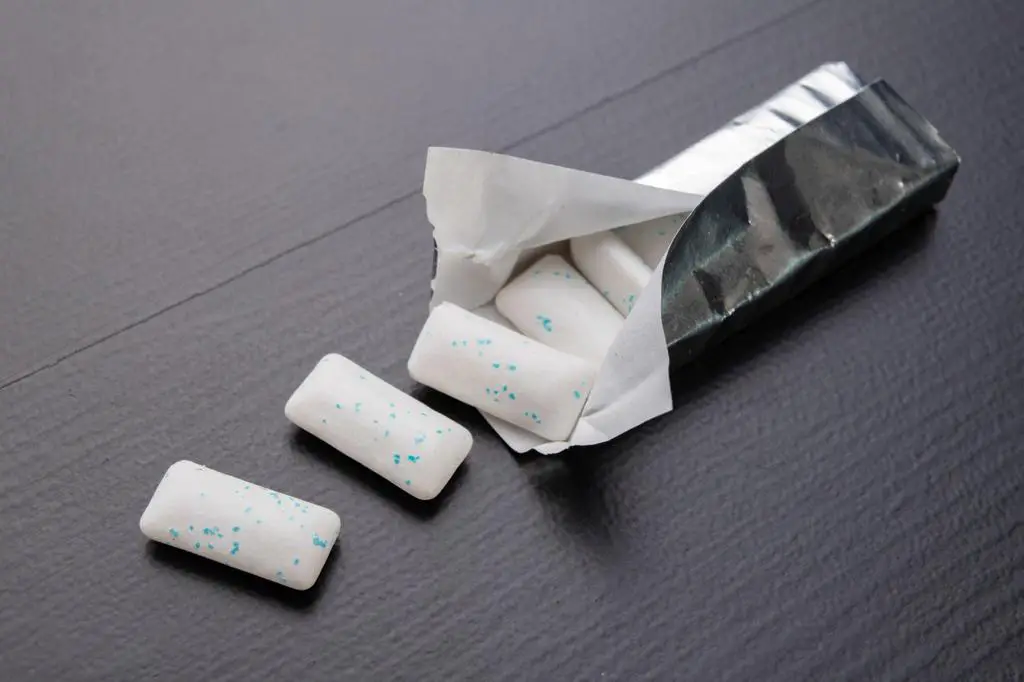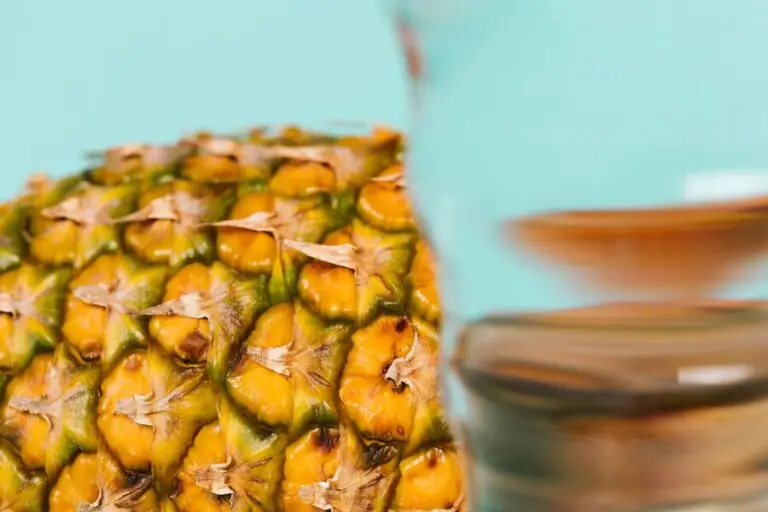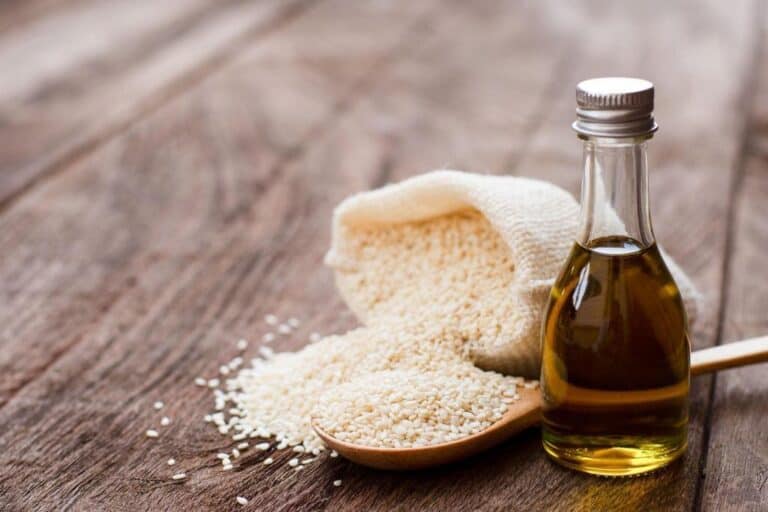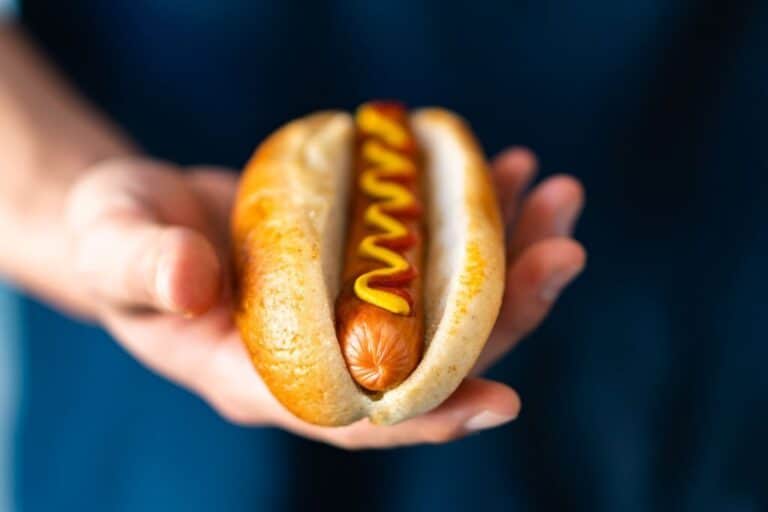Does Chewing Gum Expire? How to Tell If Your Gum Has Gone Bad

Do you have a pack of gum that has been sitting in your cupboard for a while? Has it expired? If so, do you know how to tell if your gum has gone bad? Have you ever wondered if chewing gum has a shelf life and if it can expire?
Chewing gum does not have an expiration date because it is a stable product that is low in moisture and non-reactive. But, as it turns out, gum can indeed go bad, and it’s important to know the signs.
In this post, we’ll explore the shelf life of chewing gum, how to store it properly, and what to look out for to determine if your gum has gone bad.
Whether you’re a frequent gum chewer or just looking to extend the life of your gum, this post has got you covered
Does Chewing Gum Expire?
Chewing gum is a stable food product that is not easily perishable, and as a result, it does not have an expiration date. It lasts longer because it has a low amount of moisture and is made with techniques that help keep it fresh, like adding natural or artificial flavors and sweeteners.
Chewing gum can last for a long time without losing its quality, making it a convenient and long-lasting product.
But it’s important to keep in mind that even though gum doesn’t go bad, its quality may change over time. For example, chewing gum that is not used may become brittle and lose some of its good taste. Also, gum that has been exposed to high temperatures or moisture may lose its quality and taste more quickly.
Why Do Chewing Gums Usually Have No Expiration Date?
As was already said, chewing gum is very stable because it doesn’t react with anything and has very little water in it. Because of this, chewing gum stays good for a longer time than most other foods.
It stays good for so long that chewing gum doesn’t have to be marked with an expiration date in most countries.
As part of the process of making chewing gum, different ways of preserving it are used to make it last longer. For example, ingredients such as sugar, corn syrup, and gum base are treated with antimicrobial agents to prevent the growth of bacteria and other microorganisms.
Adding natural or artificial flavors and sweeteners can also keep the gum in good shape. Also, gum is usually sold in containers or wrappers that keep air out and protect it from light and moisture, which can make it go bad.
How Long Does Chewing Gum Last?
Chewing gum has a relatively long shelf life compared to other food products. On average, chewing gum can last for about two years from the date of manufacture if stored correctly. Chewing gum that has not been used for a while could eventually become brittle and lose part of its flavor, but it will still be safe to chew. This lifespan, however, can vary depending on a number of factors.
Average Shelf Life of Gum:
The average shelf life of chewing gum is around two years. This is based on the assumption that the gum is stored properly, away from direct sunlight, heat, and moisture.
Some manufacturers may print the expiration date on the packaging, while others may use a “best by” or “use by” date to indicate when the gum is likely to start losing its freshness and flavor.
Factors that Affect the Lifespan of Gum
There are several factors that can impact the shelf life of chewing gum. These include the type of gum, the ingredients used in its production, and the storage conditions.
For example, sugar-free gum has a longer shelf life than gum with sugar, as the sugar can attract moisture and cause the gum to spoil more quickly. Also, gums that have vitamins or other ingredients added to them may not last as long as plain gum.
Storage conditions can also play a significant role in determining how long the gum will last. Chewing gum should be stored in a cool, dry place away from direct sunlight, heat, and moisture to prolong its shelf life.
Signs that Your Gum has Gone Bad
While chewing gum can have a long shelf life, it’s important to be able to recognize when it has gone bad. Consuming expired gum can be unpleasant and even cause health problems. Here are some signs that indicate that your gum has gone bad:
Change in Taste or Flavor
One of the most noticeable signs that gum has gone bad is a change in its taste or flavor. Over time, the ingredients in gum can break down and cause it to taste stale or have a different flavor. If you notice a change in taste when chewing gum, it’s a good idea to dispose of it.
Hard and Brittle Texture
Another sign that gum has gone bad is a change in texture. If you store chewing gum for a long time, it may get hard and break easily, making it hard to chew. If you notice that your gum is becoming hard and difficult to chew, it’s best to dispose of it.
Loss of Freshness
Fresh gum should have a clean, crisp scent, but over time it can start to lose its freshness. If you notice that your gum is no longer smelling fresh or has an off-odor, it’s a good indication that it has gone bad and should be discarded.
It’s important to know the signs that your gum has gone bad, because eating old gum can be unpleasant and may even be bad for your health. If you’re not sure if your gum has gone bad, it’s always better to err on the side of caution and dispose of it.
How to Store Chewing Gum
Proper storage is crucial to ensuring that chewing gum lasts as long as possible. Here’s how to store chewing gum to prolong its shelf life:
Best Storage Conditions
To prolong the shelf life of chewing gum, it’s important to store it in a cool, dry place away from direct sunlight, heat, and moisture. Chewing gum should be stored in a sealed package at room temperature, away from sources of heat such as stoves, ovens, and radiators. It’s also important to keep it away from sources of moisture, as this can cause the gum to spoil more quickly.
Common Mistakes in Gum Storage
One of the most common mistakes people make when storing gum is leaving it in the car. This is a mistake because cars can get extremely hot, which can cause the gum to spoil more quickly.
Additionally, it’s important to keep gum away from other food products, as it can absorb flavors and scents from other items. Storing gum in its original packaging is also important, as this can help protect it from moisture and other environmental factors.
By following these tips for storing chewing gum, you can help make sure it stays fresh and safe to eat for as long as possible. If you’re unsure about the best way to store your gum, consult the manufacturer’s recommendations or consult with a professional.
Can Gum Grow Mold?
Gum is a stable product that is not easily susceptible to spoilage or the growth of mold. The reason for this is its low moisture content. Mold needs moisture to grow and spread, and gum doesn’t have enough moisture for mold to grow and spread. This means that gum by itself is highly unlikely to grow mold.
However, if gum comes into contact with organic matter such as dirt, fruits, or vegetables, it is possible for mold to grow on it. This is because these things can give mold what it needs to grow: water and organic matter.
Also, if gum is kept in a warm, damp place, mold may grow faster. For example, if gum is left in a car on a hot day, it may become moist, and mold can grow on it.
As was already said, it is important to store gum the right way to stop mold from growing. The best way to do this is to keep gum in an airtight container or wrapper and store it in a dry, cool place. This will help prevent moisture from getting inside and reduce the likelihood of mold growth.
Can Chewing Gum Reduce Face Fat?

Chewing gum is a popular activity, and many people believe that it can help reduce face fat. However, this idea is a myth. You cannot spot-reduce fat from one area of your body by chewing gum or any other means.
Fat loss is a process that occurs when your body burns more calories than it takes in, resulting in a reduction of overall body fat.
While chewing gum can give your facial muscles a workout, it will not lead to a reduction in face fat. When you chew gum, you move the muscles in your face. This can increase blood flow and temporarily make fat less noticeable. But this effect doesn’t last forever. Once you stop chewing gum, your face will go back to how it looked before.
Final Thought on “Does Chewing Gum Expire? How to Tell If Your Gum Has Gone Bad”
Chewing gum can be a good way to get rid of bad breath, but it’s important to know how long it lasts and how to store it. Chewing gum usually stays good for about two years after it is made, but this can change depending on the type of gum, the ingredients used, and how it is stored.
To ensure that your gum remains fresh and safe to consume, it’s important to store it in a cool, dry place away from direct sunlight, heat, and moisture. If you notice any signs that your gum has gone bad, such as a change in taste, a hard and brittle texture, or loss of freshness, it’s best to dispose of it. By following these guidelines, you can ensure that you get the most out of your chewing gum and enjoy its many benefits.






